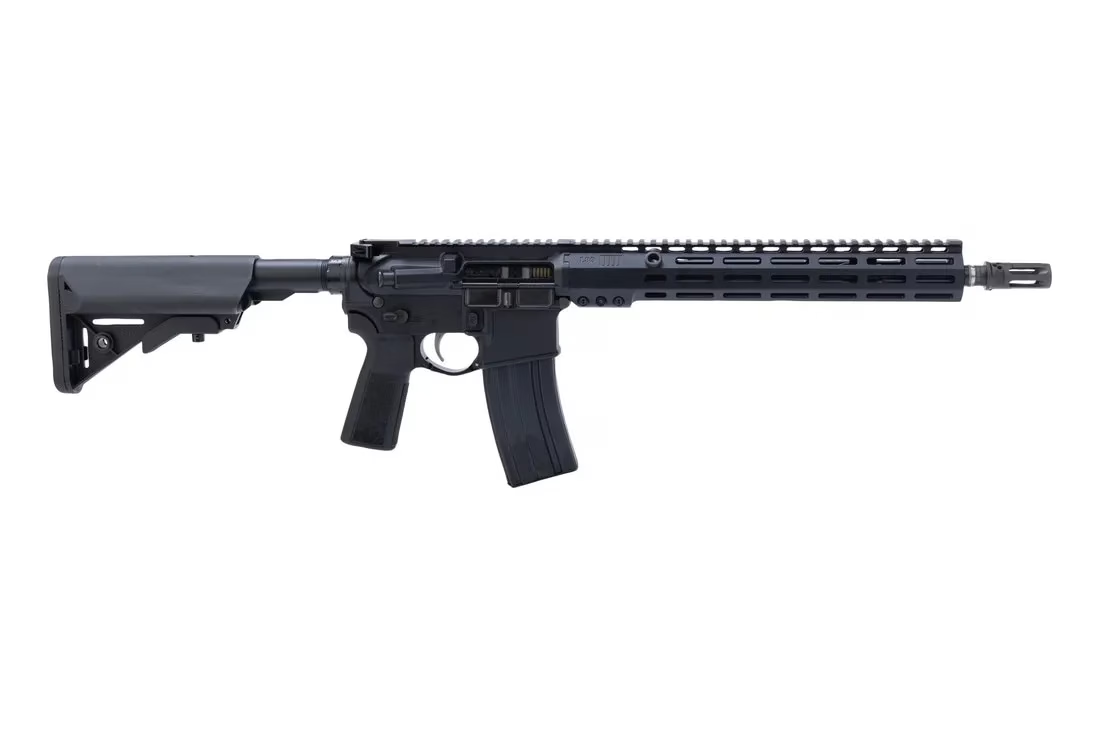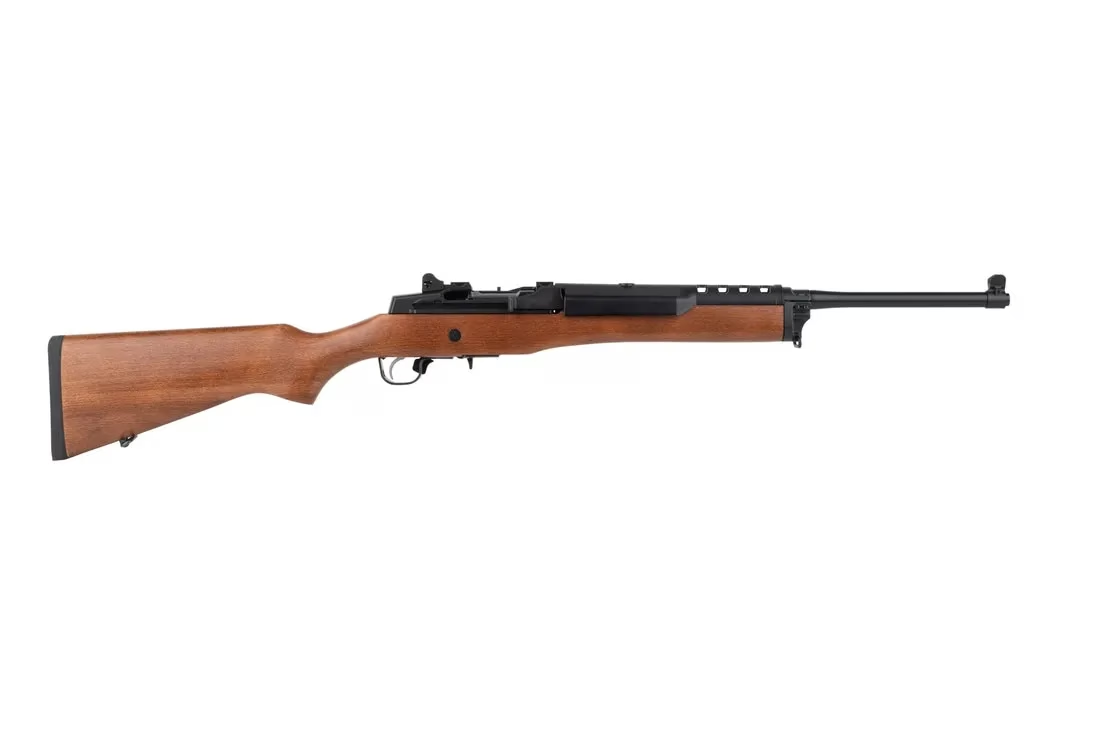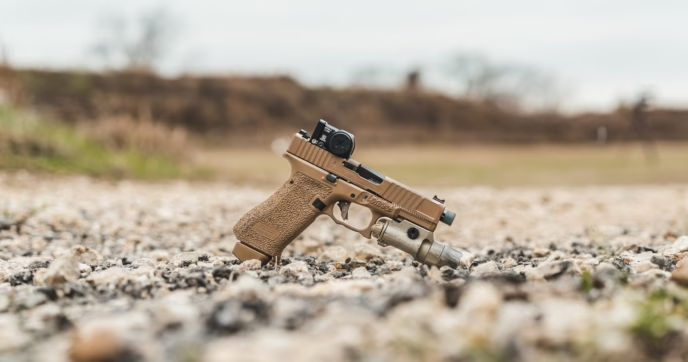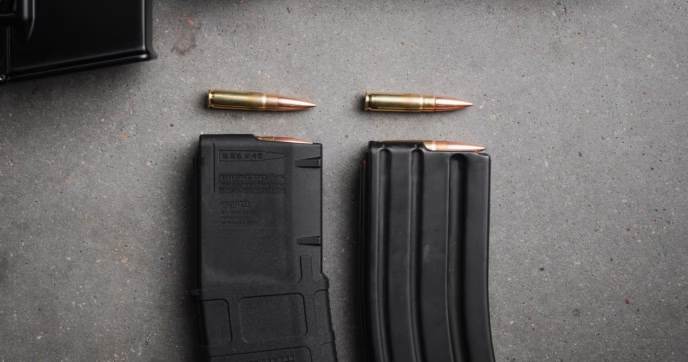When you think of modern semi-auto rifles, the AR-15 is often one of the first ones that comes to mind—and for good reason too. They’re easily the most popular rifle in America, one that can easily be adapted to suit a myriad of different applications ranging from intensive competitive shooting to long-range precision and everything in-between.
At times, it feels like there’s no other rifle that does it quite like the AR-15, but that doesn’t mean it’s the only rifle in its class. Once you start to examine what else is available, you’ll find other popular rifles platform that share many of the AR’s qualities. One such rifle is the Ruger Mini-14, another semi-auto rifle designed around the .223/5.56 cartridge that uses detachable magazines.
Upon first glance, you wouldn’t expect the two to be as comparable as they are, but when pitting them against each other, you start to see why there’s often debates focusing on which is best. So which one really is the best? Below, we’re taking a closer look to see which rifle reigns supreme.
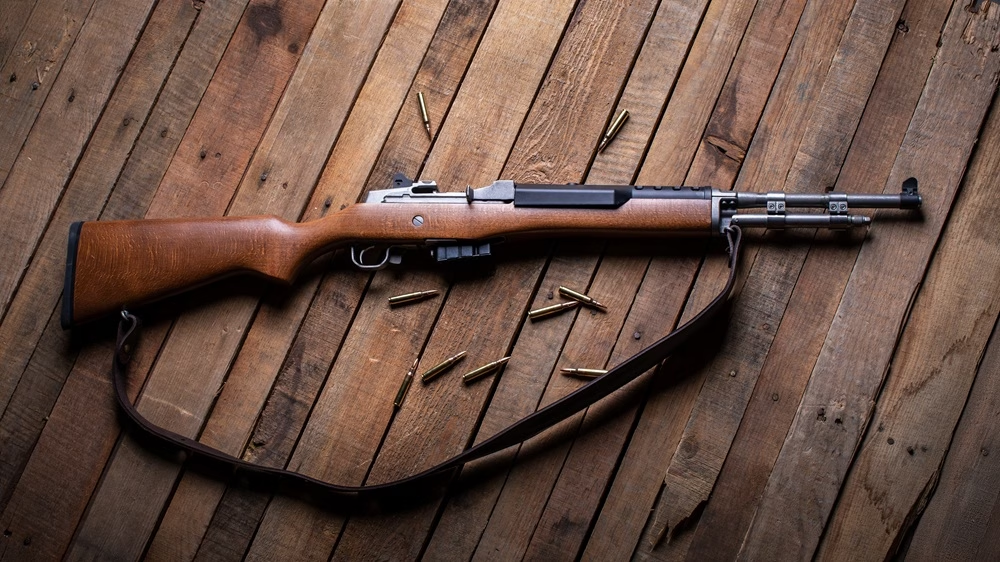
Mini-14: History and Overview
The Mini-14 rifle was developed and introduced by Ruger in the 1970s. Taking inspiration from the M14, the two rifles share many of the same features, such as a short-stroke gas piston operation and rotating bolt, making it incredibly reliable in most environments. They even use similar detachable rock and lock style magazines and have a similar overall aesthetic. Still, the two aren’t entirely one to one, as the Mini-14 improves upon the M14s piston system so that it’s self-cleaning and doesn’t foul the bolt up as much after firing.
Since its introduction, the Mini-14 platform has been used in some capacity by Government and Law Enforcement Agencies, World Militaries, and civilians alike. Historically, models like the Mini-14 GB stand out as they were equipped with enhanced stocks that featured a pistol grip, a folding stock, and even a bayonet lug. Additionally, the AC-556, a select-fire version of the Mini-14, was prominently used by Law Enforcement and Military personnel during the 1980s and 90s, and they’re even used by select French Military and Police units today.
On the civilian market, the Mini-14 is still one of Ruger’s most popular rifles, and they’re currently available in three distinct variations: The Mini-14 Ranch Rifle, Mini-14 Tactical, and the Mini-30. Mini-14 Ranch Rifles feature a longer 18.5-inch barrel, traditional style rifle stocks, and no threaded barrel—while Mini-14 Tactical rifles can come equipped with either a 16.12- or 18.50-inch barrel, a traditional or upgraded stock, and they have threaded barrels to accept various muzzle devices. Lastly, the Mini-30 is another variant of the Mini-14 that’s designed to chamber 7.62×39, and it’s currently available in either a ranch or tactical styling.
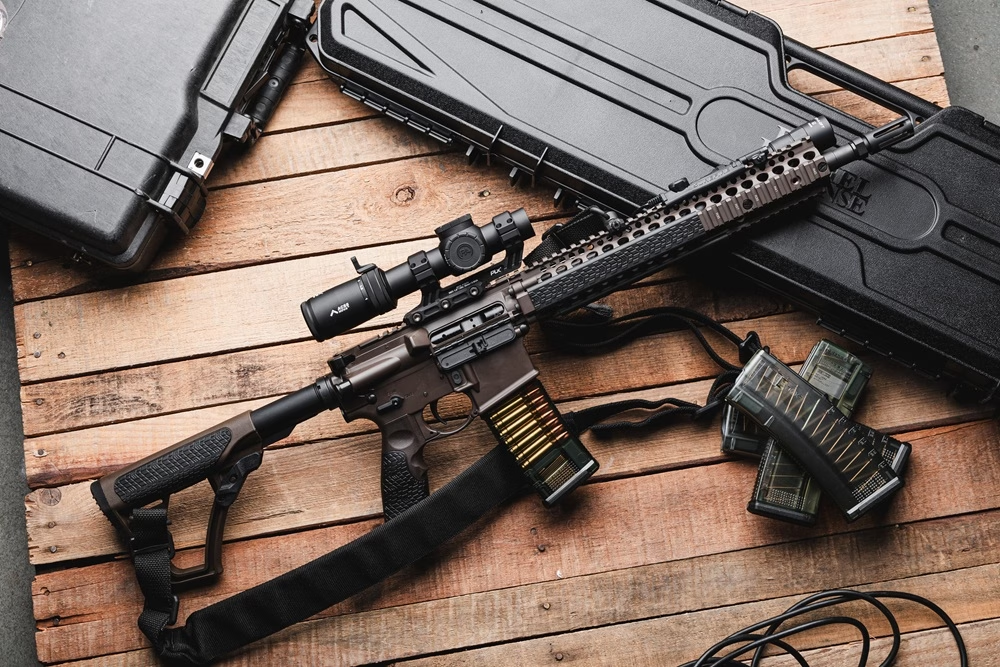
AR-15: History and Overview
Developed by Eugene Stoner and Armalite in 1956, the AR-15 is a rifle based on Stoner’s earlier AR-10, that was made to be smaller, lighter, and able to chamber .223 Remington. During their development, AR-15s were put through a variety of tests and were even found to be, on average, upwards of three times as reliable as the M14, the standard issue rifle at the time. Despite its success, the AR-15 was passed up in favor of the M14 during testing, and the rights to the rifle were sold to Colt, who picked up production shortly after.
With Colt at the helm of the AR-15’s production, they sought out to make the rifle more reliable, functional, and ergonomic. Components like the charging handle were reshaped and moved from under the carry handle to rear of the upper, and their barrels were updated with a new twist rate that better handled M193 55-Grain ammunition. Eventually, different variants of the AR-15 would be adopted by the U.S. Military, and once their success was known, it wouldn’t be long until other groups started using them too. Over the years, the AR-15 platform would serve as the basis for many iconic rifle designs such as the Mk 18 CQBR, Mk 12 SPR, and the various M4A1 variants, further showcasing the platform’s adaptability as a true jack of all trades.
On the civilian market, Colt AR-15s became increasingly popular, and when their patent expired in 1977, other manufacturers capitalized on the AR-15s popularity. Fast forward to today, and the market is brimming with countless brands producing their own versions of the AR-15, as well as AR-15 accessories like handguards grips and more, providing a near-endless degree of customization for the platform.
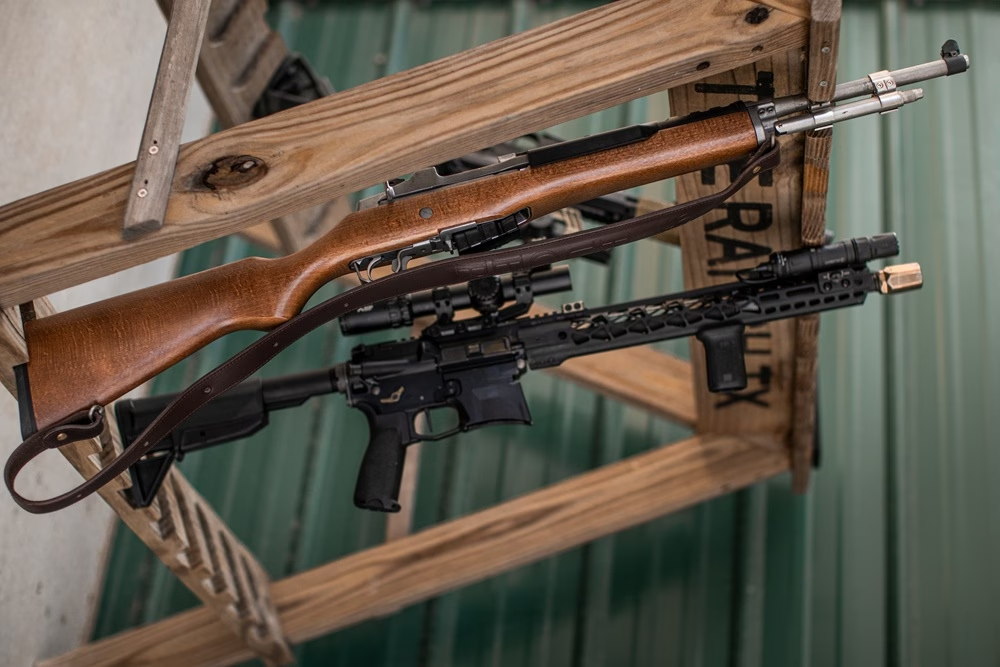
Mini-14 vs. AR-15: Key Differences
Both the Mini-14 and AR-15 have many core characteristics in common—they’re both semi-automatic, use detachable magazines, and were originally designed to chamber .223 Remington/5.56 NATO. However, when you dive more into their respective designs, their differences are revealed.
Gas System
One of the primary distinctions between the two platforms is their gas system. As we mentioned above, the Mini-14 uses a short-stroke gas piston and a rotating bolt design, while AR-15s on the other hand, use a direct-impingement gas system with a dedicated bolt carrier group. Both systems work similarly, but whereas short-stroke piston systems direct the gas to a piston which pushes back on the bolt to cycle the action, direct impingement systems divert gas directly back to the AR’s bolt carrier group to do so.
Between the two, short-stroke gas piston systems tend to run cleaner than DI systems since the gasses don’t come into direct contact with the bolt. However, this comes at the cost of being heavier since they require the use of more components. DI systems are lighter overall, but since gas comes into direct contact with the BCG, carbon fouling becomes a bigger issue. As such, the AR-15 will generally be dirtier compared to the Mini-14 after a good range day.
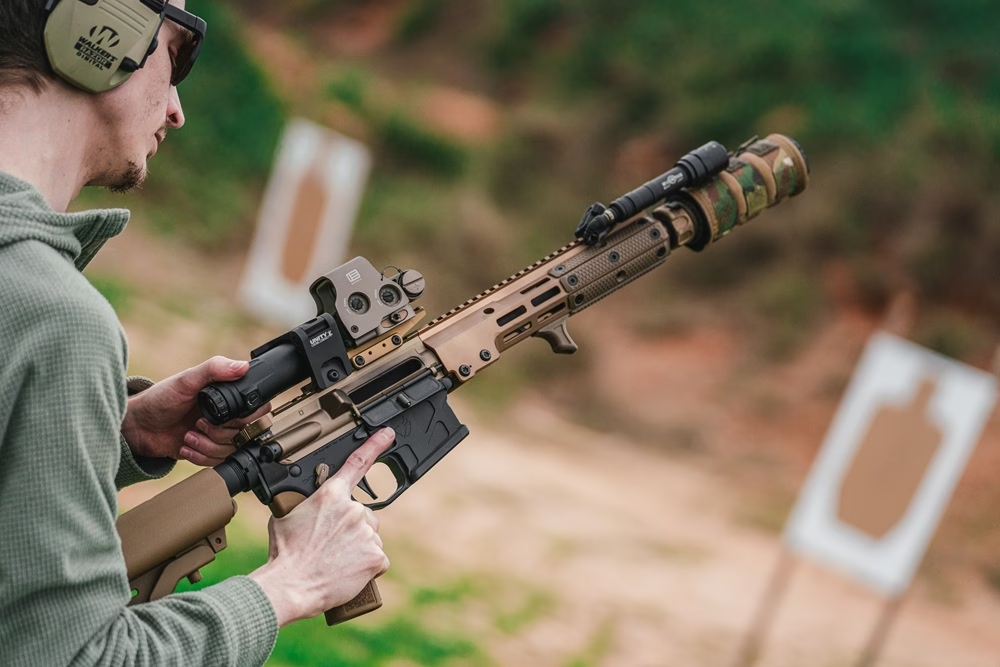
Modularity
The AR-15 is, by far, the most modular of the two platforms. By design, each of its core components like its grip, stock, handguard, trigger, and other controls can be easily swapped out for other ones, allowing for complete customizability to better suit a specific application, or user preference. For instance, AR-15s most often come equipped with free floating handguards with built-in mounting surfaces, allowing you to mount a variety of accessories like sling mounts, grips, and weapon lights. Even mil-spec AR-15s can be outfitted with drop-in handguards that have similar mounting capabilities.
Mini-14s are modular, but not to the same degree. Standard Mini-14s have a traditional style stock that lacks features like a pistol grip, collapsible/folding stock, and accessory mounting surfaces. There are select Mini-14 Tactical models that come with an upgraded stock reminiscent of the AC-556, or an ATI Strikeforce stock, which both have a side folding stock and a pistol grip. You can opt for an aftermarket chassis system as well, but they’re limited in terms of their overall capabilities since they need to work within the design confines of the Mini-14.
Also, another key consideration is each rifle’s caliber selection. Currently, the Mini-14 comes chambered in either 5.56 NATO, .300 Blackout, or 7.62×39 (only on the Mini-30). While these calibers are incredibly popular, you’re limited to only these three when opting for the Mini-14. We cover this more in-depth in our guide, “What Caliber is an AR-15?”, but the AR-15 can be configured to chamber all those calibers as well as others like 6.5 Grendel, 6mm ARC, and .458 SOCOM to name a few.
Accuracy
Accuracy has often been a contentious subject in regard to the Mini-14. One of the issues on early model Mini-14s was their pencil barrel profile, which when firing, would throw shots because of its poor harmonics, giving them having a reported 100-yard accuracy of 4- to 6-MOA. However, this issue was later fixed in 2005 when Ruger started producing their rifles with a heavier barrel profile which improved its harmonics. Now, current production Mini-14s have a 100-yard accuracy of 2-MOA, putting them on par with rifles like AR-15.
AR-15s generally offer better accuracy at distance thanks to their DI gas systems though. DI systems have less reciprocating mass since they don’t use a piston, and this lack of moving parts is much better for barrel harmonics giving the AR-15 an edge in terms of accuracy. That said, it’s important to recognize that there are a lot of factors that contribute to a rifle’s accuracy, such as barrel length and material, ammunition, and whether you use a rifle scope or other optic. Additionally, the AR-15 can be built in such a way so that it’s more capable in long-range applications.
Regardless, both platforms are generally considered to be accurate, but the AR-15 wins out in this regard thanks to its gas system and its ability to be configured specifically for long-range accuracy.
Optic Mounting/Compatibility
Optics play a key role in maximizing your rifle’s capabilities, with red dot sights and rifle scopes being a common addition to most user’s setups. AR-15s most often come optic ready with a dedicated picatinny rail on top of the upper receiver. The Mini-14 is technically optic-ready, as it has scope mounts integrated into the receiver to accept scope rings. For picatinny based mounting though, you’ll need to buy a specialized optic mount or opt for a chassis that has an upper picatinny rail integrated into it
Keep in mind that Mini-14 optic mounts aren’t necessarily hard to find, but they don’t offer the same level of optic-readiness like that of an AR-15.
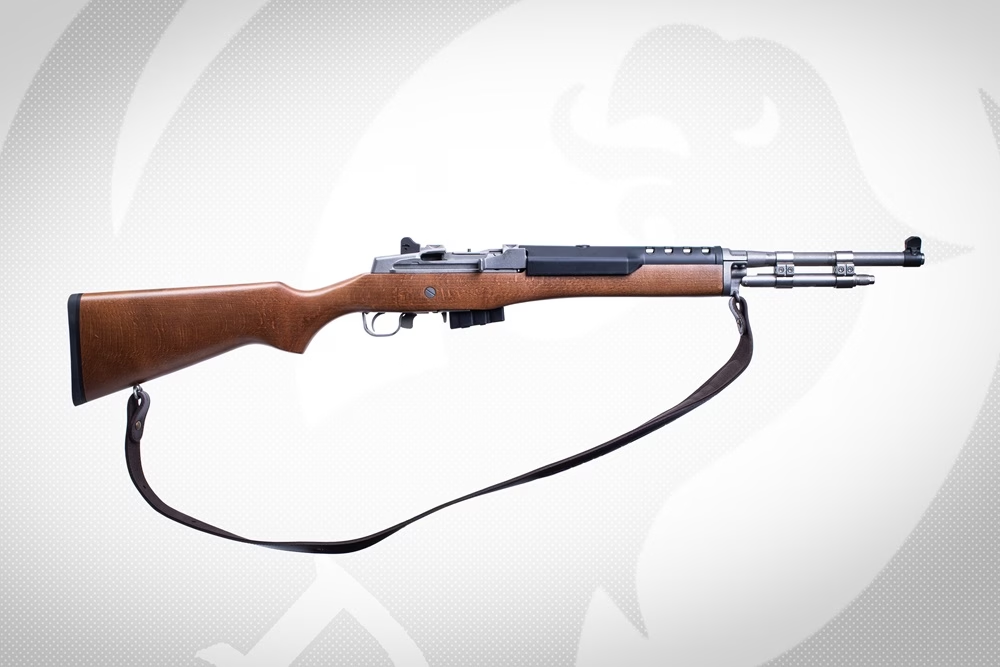
Other Factors to Consider
One of the big factors that plays into buying a certain type of rifle is their legality. Different states have different laws and restrictions on semi-auto rifle like the AR-15 and Mini-14, with many of these states basing their rulings on select features like pistol grips, magazine capacity, folding/collapsible stocks, etc.
Consequently, rifles like the AR-15 are, at times, more restricted than rifles like the Mini-14. When in their standard configuration, the Mini-14’s stock doesn’t have such features, making them easier to own in restricted states, but this varies heavily depending on the state you’re in. At the end of the day, you are responsible for knowing and abiding by all rules and regulations at the federal, state, and local levels of your area, so it’s important to be sure of them before making any purchases.
Pricing is another key consideration to ponder. Because of the sheer variety of AR-15s available, it’s possible to find budget-friendly models around the $600-$1,000 price range, while more premium rifles can cost anywhere from $1,000 to upwards of $2,500+. Mini-14s don’t have this same level of variety since they’re only produced by Ruger, locking their price to around $1,300 to upwards of $1,850+ depending on the model.
Which Platform is Best?
By now, we’re sure you’re wondering which of the two is the better rifle? To be blunt, choosing between one or the other ultimately comes down to your preference, as their strengths are present in their different aspects. If you’re looking for a lightweight rifle that offers a superior degree of modularity, the AR-15 is the clear winner. Its parts aftermarket alone grants every user the ability to tailor their rifles to their preferences and specific application, making it a go-to rifle for many.
Still, the Mini-14 is a solid option to consider. Although it isn’t as adaptable as the AR-15, it’s still capable of being configured to be a formidable, purpose-built rifle. There are a number of manufacturers producing aftermarket components for these rifles, and the variety of models to choose from provides you with enough options to find one that meets your needs and purpose. It also gives you the opportunity to diversify your personal collection, which is always a plus in a market that’s dominated by rifles like the AR-15.
Conclusion
The Mini-14 and AR-15 have both solidified their legacies as iconic rifles. Ever since it was introduced, the Mini-14 has been an incredibly popular rifle, known for its unique design and capabilities as a modern sporting rifle—and as rifles like the AR-15 have grown to dominate the firearm landscape, there’s long been debates as to which rifle is best.
At their core, each platform can adequately serve as the basis for a quality rifle build, with each of them being a solid choice for different applications. While the AR-15 is easily the winner in terms of overall adaptability having the capability to fit multiple roles, the Mini-14 and its use of a short-stroke gas piston makes it dependable enough to be used in harsh conditions without fail, while it’s aesthetic styling and rich history make it a unique option that offers a bit of diversity.
Ultimately though, choosing one over the other comes down to your own personal needs and preferences. If you’re wanting a hyper-specific rifle setup for something like long-range shooting or CQB, an AR-15 is your best bet. But, if you’re looking for a good AR-15 alternative, or just want to expand your personal collection, you can’t go wrong with the Mini-14.
